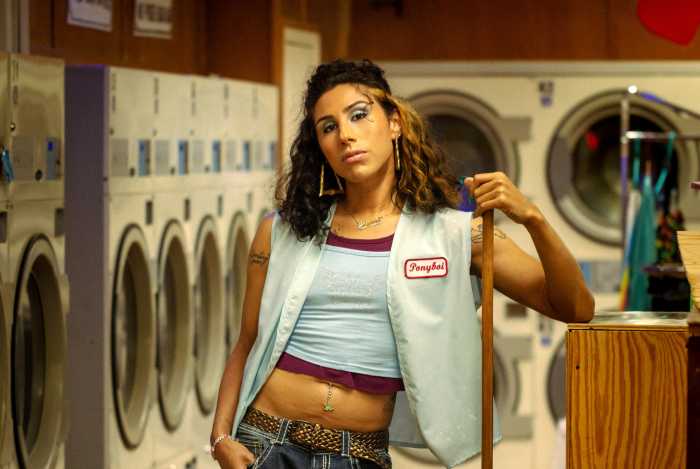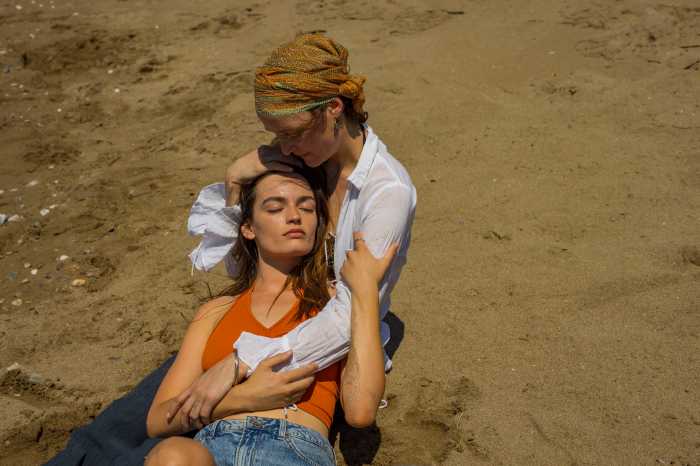Trans filmmaker Chase Joynt’s fantastic and fascinating documentary, “Framing Agnes,” deftly unpacks the legacy of Agnes, a transgender woman who lied to get access to gender reassignment surgery in the 1960s. While Agnes has been applauded for navigating a system designed to exclude her, her behavior also generated negative attention within the trans community.
Joynt recreates UCLA professor Harold Garfinkel’s interviews with six trans men and trans women using files from the university’s archives to explore how trans people have been sensationalized in American culture. The discussions address perceptions about Christine Jorgensen, the networks that trans people developed, issues of passing, and the paradox of false personas, as well as relationships, risks, visibility, and privilege. Considerable attention is spent on “Georgia” (Angelica Ross) who had more limited access than her white peers and was picked up for sex work just for walking down the street.
Joynt’s film also features shrewd commentary by trans historian Jules Gill-Peterson, who places Agnes and these other trans pioneers’ lives in perspective. The result is a layered and fascinating portrait of trans history.
Joynt spoke with Gay City News about creating “Framing Agnes.”
How did you discover Agnes’ story as well as those of the other subjects, some of which are unknown? What sparked this project?
My friend and collaborator Kristin Schilt, who appears in the film beside me, and I received a fellowship at the University of Chicago to work together collaboratively. It charged an artist and an academic to come together around a set of shared questions. At the time, we taught a class called “The politics of narrative construction,” which considered the construction of expert knowledge from a variety of different disciplines — sociological interview theory and documentary film, etc. We used the case study of Agnes as this extraordinary opportunity to show how the same kind of source material can be reinterpreted by different disciplines, by different people for different reasons, and have different conclusions. The spark started there. We were able to gain access to the private archival holdings of Garfinkel after his passing. It was through a kind of labor exchange we were able to continue our investigation and find the transcripts. We knew all along that we were looking for Agnes, but the emergence of the other cases allowed us to ask a much more complex set of questions about what was happening at UCLA in the late 1950s.
The subjects talk about performing gender and you create a layered approach with the cast in character, on a talk show, and as themselves. What determined your meta, layered approach to telling their stories? Viewers often have to recalibrate who is talking and what they are saying about their subject, or themselves.
In that moment of seeing all of the transcripts and looking at the exchanges between Garfinkel and his research subjects, I was taken aback by the kinds of questions he was asking and the kinds of questions coming out of the mouths of Jerry Springer and Jenny Jones on the talk show circuit. What would happen if we collapse these contexts of media and medicine? What can be learned? It allows us to look at the institutional frameworks as much as we are looking at the individual subjects. How does the frame of media control how we interpret trans life? How does medicine set the frame for our understanding of trans and gender non-conforming subjects in this very particular context? It is from the willingness of those on screen to think across that line with me in real time through performance. What you are reacting to is that constant turn towards a recalibration — who are we thinking about and why?
There are several discussions about the layers of disclosure for trans people as well invisibility, being seen, feeling emancipated. I loved the discussion of code-switching, or when Max explained he’s a writer who can talk about his book of poetry, but if he mentioned his memoir, it “outs” him. What observations do you have about “slyly misleading folks to protect” as one subject in the film says?
It’s one of the things I think the cohort in the film allows us to analyze. We are all performing and protecting versions of our lives for different reasons and in different contexts. You’re quoting Jules Gill-Peterson there, and what she so beautifully allows is for many people to walk towards the story regardless of their identificatory position. This is not a film that is trying to only speak about transness in a very particular context. We are all regulated through gender and sex and contending with processes of racialization. How are we thinking kaleidoscopically about these issues? One of the ways to do that is to draw attention not just trans people who are forced into these positions to narrate very particular versions of ourselves to gain access to the services and spaces we need to survive.
Can you talk about working with the “actors” and their subjects?
In pre-production, I was talking to Angelica about Georgia as a character, and I was offering all the things I thought were sparks and possibilities for this creative reenactment. And Angelica said, “I don’t need you to do this. I know her. I have a kind of access point thinking about Georgia as a character.” It’s entirely in Angelica’s own experience and desires how she walks towards Georgia as a historical subject and it’s not mine to do. It’s true of each person in the film. Max and his connection to [his character of] Henry is a beautiful example of trans historical resonance that leaps so far beyond questions of truth. It becomes about an embodiment. We can’t ever settle on the line between these subjects, ideas, issues, or feeling.
These subjects speak truth to power, which Laverne Cox did so eloquently on the Katie Couric clip seen in “Framing Agnes” and which other subjects in the film do with Garfinkel. The subjects have to define themselves before they are taken seriously, and your film punctures that brilliantly. Can you discuss this?
I think one of the meaningful offerings of this archive is access to those who are working with no scripts. They do not have a history of trans medicine where they understand there are certain things you can do or not do to pass through these gatekeepers. They are literally building those scripts in that room with Garfinkel and his contemporaries. One thing I love to say is that Garfinkel had no idea what he was talking about. He was asking questions genuinely not understanding how trans people were living their lives. Because he was a sociologist, he was interested in the How questions — How do you live life? Not Why are you making these choices? It is through his questions that we gain access to the texture and fabric of the everyday. It is not lost on any of us that many trans and gender non-conforming people in medical institutions and contexts are hyper-aware of the kinds of stories they need to tell in order to pass through these diagnostic protocols. Has there been change? Sure. But there has not been a kind of social change that doesn’t mean we can’t find deep resonances and connections to what was emerging in the late 1950s.
I liked Jen Richards saying she doesn’t have her subject Barbara’s confidence. Angelica Ross talking about the 6 feet tall, baritone-voiced women, or Denny’s comments about knowing all the diesel dykes, but not quite fitting in with them. What are your thoughts about these stories?
That’s drawing from the glory of the transcripts. We were able to spend time with some people who were enmeshed and embedded in the queer community in the late 1950s early 1960s Los Angeles, and some who had no access and denied any kind of association with sexually minoritized communities. It is extraordinary to me that in the context of these six cases alone, we get to gauge multiplicity of experiences. One thing that didn’t make it into the film, but I love about Denny’s character, is that he tells Garfinkel that he was in a party in the Hollywood Hills with 200 lesbians. And there’s this moment even on the page that Garfinkel could not even imagine a world where there were that many queer and trans people hanging out together in Southern California. In these moments, you recognize that queer and trans people know each other. They are organizing and showing up for each other. Barbara knows all the doctors, and where all the surgeries are taking place, and where the meet ups are. We are networking and organizing both under the radar and in the face of those who tell us we shouldn’t be doing so.
“Framing Agnes” | Directed by Chase Joynt | Opening December 2 at Film Forum | Distributed by Kino Lorber.



































